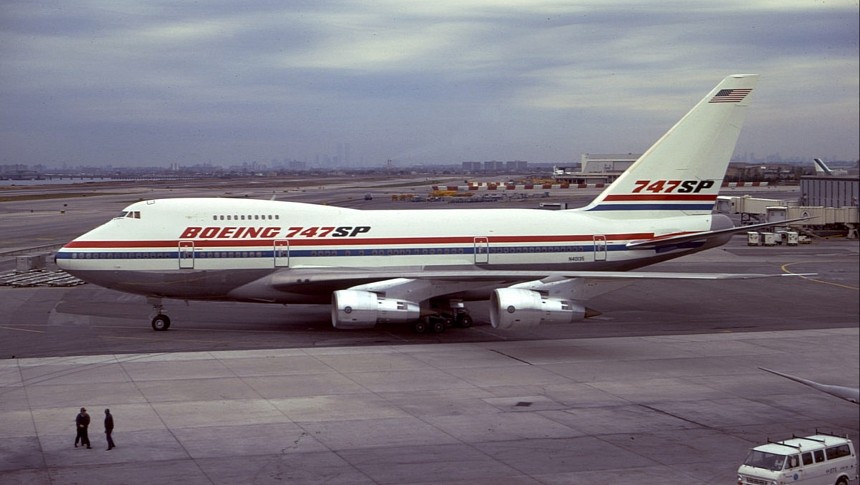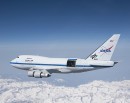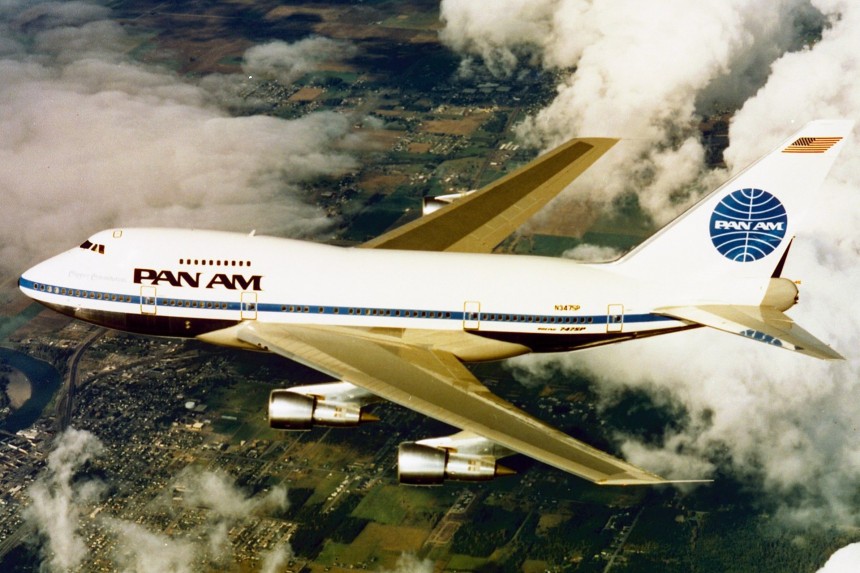For upwards of four decades, the Boeing 747 was pound for pound the largest, most capable, and the most iconic wide-body, quad-engine airliner the world had ever seen. Though Airbus' A380 may have may have stolen the "Seven-Four's" thunder as the world's largest airliner, it's hard to say the Airbus had anywhere near the same impact on the global aviation space. So who in their right mind would consider thinking, "The 747 would be even better if we made it smaller." Evidently, someone at Boeing did. This is the story of the 747SP.
But to understand why Boeing even considered down-sizing the world's largest airliner, we need to understand what the commercial aviation space looked like back in the early 1970s. Back in those days, the 747-100 was just beginning to usher in the age of the wide-body airliner to the masses. In service with iconic airlines like TWA and Pan Am, the 747 could ferry more people to places farther away than some in the day could even fathom. In one trip, the jet could carry upwards of 350 passengers in excess of 5,300 miles (4,620 nmi, 8,560 km) thanks to four massive Pratt & Whitney JT9D turbofan engines.
By the middle of the 70s, the 747 was already heralded as a halo vehicle for the entire commercial airline space. But by galavanting high-paying passengers across the globe in luxury and comfort, the 747 found itself catering to various niche markets. One route that caught Boeing's eye was a particularly lucrative route planned by Pan Am from major hubs in the U.S. like New York-JFK to Tehran, Iran. Though it might shock younger people who only know Iran as adversarial to the West, it might be surprising to know Iran once welcomed American travelers.
In the opposite direction, Imperial Iran's national airline Iran Air also wished to begin direct flights between New York-JFK airport and Tehran. Even the standard 747-100 would struggle to manage a jaunt of that size in one go. For a brief period, this route was even the longest in the world by length. But by eliminating a great deal of weight by downsizing the airframe, the 747SP could fly places no other airliner in the world could manage on a single tank of fuel. By shortening a standard 747 airframe, Boeing also managed to bridge the gap between the colossal 747-100 and smaller wide-body jets like the Lockheed TriStar and the Douglas DC-10. In the days before the bespoke Boeing 767 hit the market, a smaller 747 derivative was Boeing's best bet to fill this market space.
Dubbed the 747 "Special Performance," this novel bird wasn't a simple 747-100 with 47 feet (14 m) lopped off its tail. It was a completely new airframe with fewer cabin doors, simplified single-slot flaps, smaller ailerons, and a significantly taller vertical tail compared in proportion to its size than the 747-100. With a maximum takeoff weight of 700,000 lb (317,500 kg), including passengers and cargo, the 747SP was still a seriously capable aerial transport. All in all, the 747SP undercut the average 747-100/200 by 45,000 lbs (20,411 kg). As for engines, two options were available on the 747SP. These would be the same Pratt & Whitney JT9Ds found in early-model 747-100s or the Rolls-Royce RB211.
With a monumental range of 7,650 miles (12,320 km, 6,650 nm), the 747SP could manage to travel routes that airliners like the TriStar and the DC-10 simply couldn't. All while cruising at roughly 90 percent the speed of sound and using less fuel because of its smaller size. In one instance, Boeing test pilots managed to fly the 747SP at a scarcely believable 0.92 times the speed of sound, effectively the knife edge of supersonic. Despite being smaller than the normal 747, the SP could still carry up to 400 passengers in a single-class configuration and roughly 240 passengers with multi-level seating ranging from economy to first class.
When it was all said and done, 45 747SPs were manufactured by Boeing, with the first deliveries commencing in 1976. Though Pan Am initially placed an order for at least 25 747SP airframes, this was ultimately cut down to a mere ten examples. Though one final example was manufactured for a customer in the United Arab Emirates in 1986, it's clear the 747SP didn't generate much of a profit for Boeing, if at all.
This production figure was the exact number estimated by the company needed in order to break even, but far below the 200 or so airframes Boeing estimated the market demanded. At the same time, newer, more efficient twin-engine, wide-body airliners like the Boeing 767 and the Airbus A300 series continued to cannibalize market shares that, had they not existed, the 747SP could have used as a lifeline to make the airliner generate a profit. With these circumstances in mind, the 747SP never really stood a chance in hindsight.
Though not a smash hit by most ostensible measures, the 747SP did have at least one famous application. That of the platform for NASA's Stratospheric Observatory for Infrared Astronomy (SOFIA) telescope platform. By removing the interior of a single 747SP (serial number 21441) and mounting a high-sensitivity infrared telescope in the rear of the fuselage, NASA could conduct in-depth research on the intricacies of space-based telescope systems without launching a single satellite.
In its 12 years of service between 2010 and 2022, the lessons learned with the SOFIA helped NASA prepare to work with infrared telescopes of ever-increasing size and capability. It's in no small part, thanks to SOFIA, that billion-dollar infrared telescopes like the James Webb Space Telescope continue to operate flawlessly in service today. Though the most famous 747SP is now retired from service, it did at least serve as a fitting book-end for what's become one of the most interesting curiosities of the golden age of wide-body quad-jets. Today, only a handful of 747SPs remain in service with global cargo carriers. So if you look up in the sky one day and find one flying overhead, just know how rare and special what you just saw truly is.
By the middle of the 70s, the 747 was already heralded as a halo vehicle for the entire commercial airline space. But by galavanting high-paying passengers across the globe in luxury and comfort, the 747 found itself catering to various niche markets. One route that caught Boeing's eye was a particularly lucrative route planned by Pan Am from major hubs in the U.S. like New York-JFK to Tehran, Iran. Though it might shock younger people who only know Iran as adversarial to the West, it might be surprising to know Iran once welcomed American travelers.
In the opposite direction, Imperial Iran's national airline Iran Air also wished to begin direct flights between New York-JFK airport and Tehran. Even the standard 747-100 would struggle to manage a jaunt of that size in one go. For a brief period, this route was even the longest in the world by length. But by eliminating a great deal of weight by downsizing the airframe, the 747SP could fly places no other airliner in the world could manage on a single tank of fuel. By shortening a standard 747 airframe, Boeing also managed to bridge the gap between the colossal 747-100 and smaller wide-body jets like the Lockheed TriStar and the Douglas DC-10. In the days before the bespoke Boeing 767 hit the market, a smaller 747 derivative was Boeing's best bet to fill this market space.
Dubbed the 747 "Special Performance," this novel bird wasn't a simple 747-100 with 47 feet (14 m) lopped off its tail. It was a completely new airframe with fewer cabin doors, simplified single-slot flaps, smaller ailerons, and a significantly taller vertical tail compared in proportion to its size than the 747-100. With a maximum takeoff weight of 700,000 lb (317,500 kg), including passengers and cargo, the 747SP was still a seriously capable aerial transport. All in all, the 747SP undercut the average 747-100/200 by 45,000 lbs (20,411 kg). As for engines, two options were available on the 747SP. These would be the same Pratt & Whitney JT9Ds found in early-model 747-100s or the Rolls-Royce RB211.
When it was all said and done, 45 747SPs were manufactured by Boeing, with the first deliveries commencing in 1976. Though Pan Am initially placed an order for at least 25 747SP airframes, this was ultimately cut down to a mere ten examples. Though one final example was manufactured for a customer in the United Arab Emirates in 1986, it's clear the 747SP didn't generate much of a profit for Boeing, if at all.
This production figure was the exact number estimated by the company needed in order to break even, but far below the 200 or so airframes Boeing estimated the market demanded. At the same time, newer, more efficient twin-engine, wide-body airliners like the Boeing 767 and the Airbus A300 series continued to cannibalize market shares that, had they not existed, the 747SP could have used as a lifeline to make the airliner generate a profit. With these circumstances in mind, the 747SP never really stood a chance in hindsight.
Though not a smash hit by most ostensible measures, the 747SP did have at least one famous application. That of the platform for NASA's Stratospheric Observatory for Infrared Astronomy (SOFIA) telescope platform. By removing the interior of a single 747SP (serial number 21441) and mounting a high-sensitivity infrared telescope in the rear of the fuselage, NASA could conduct in-depth research on the intricacies of space-based telescope systems without launching a single satellite.














